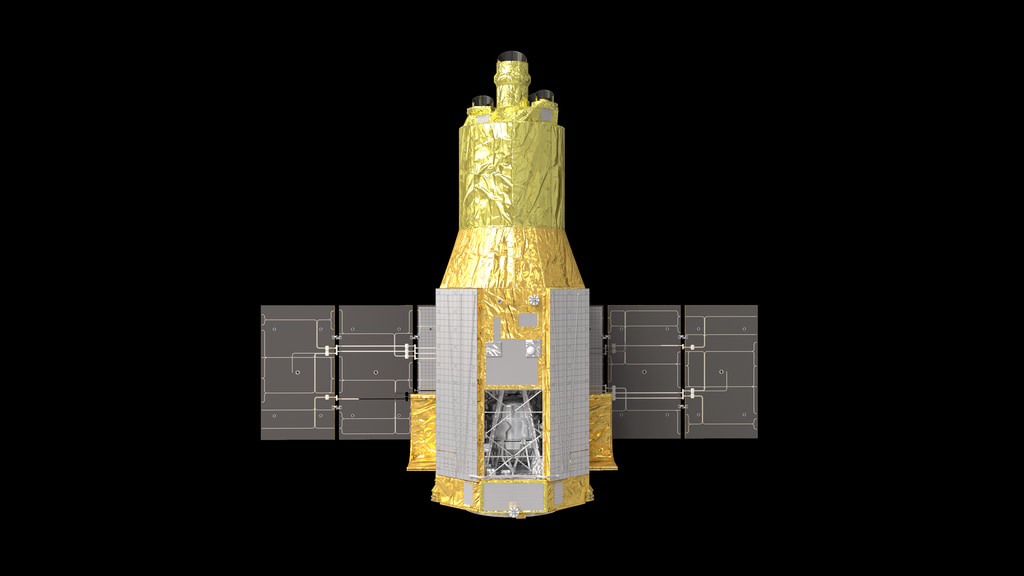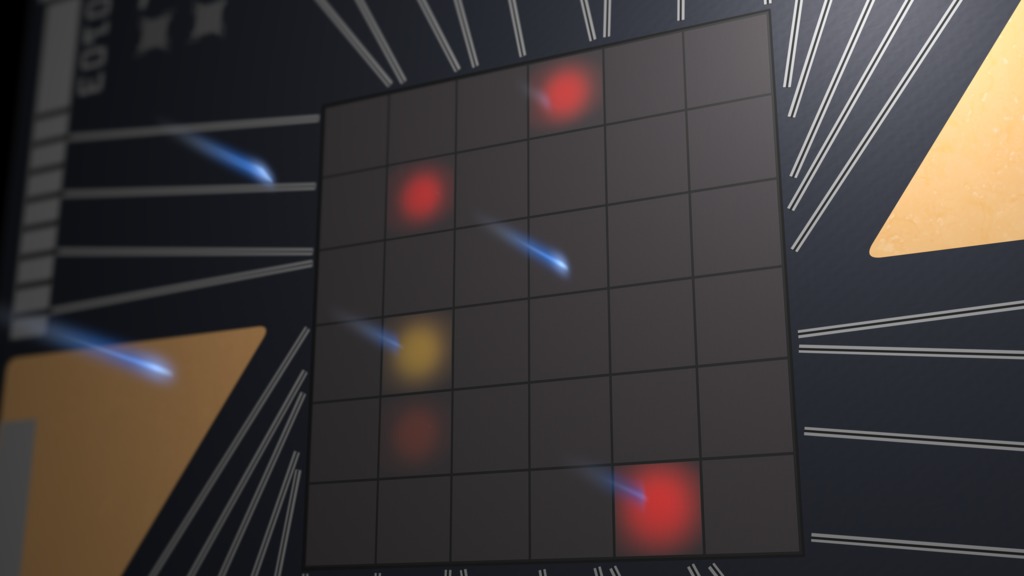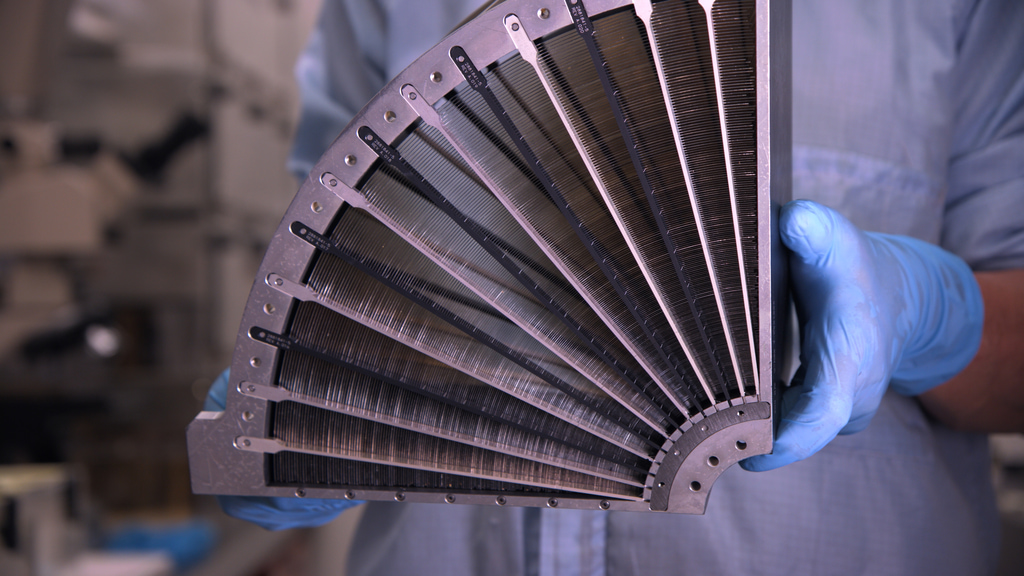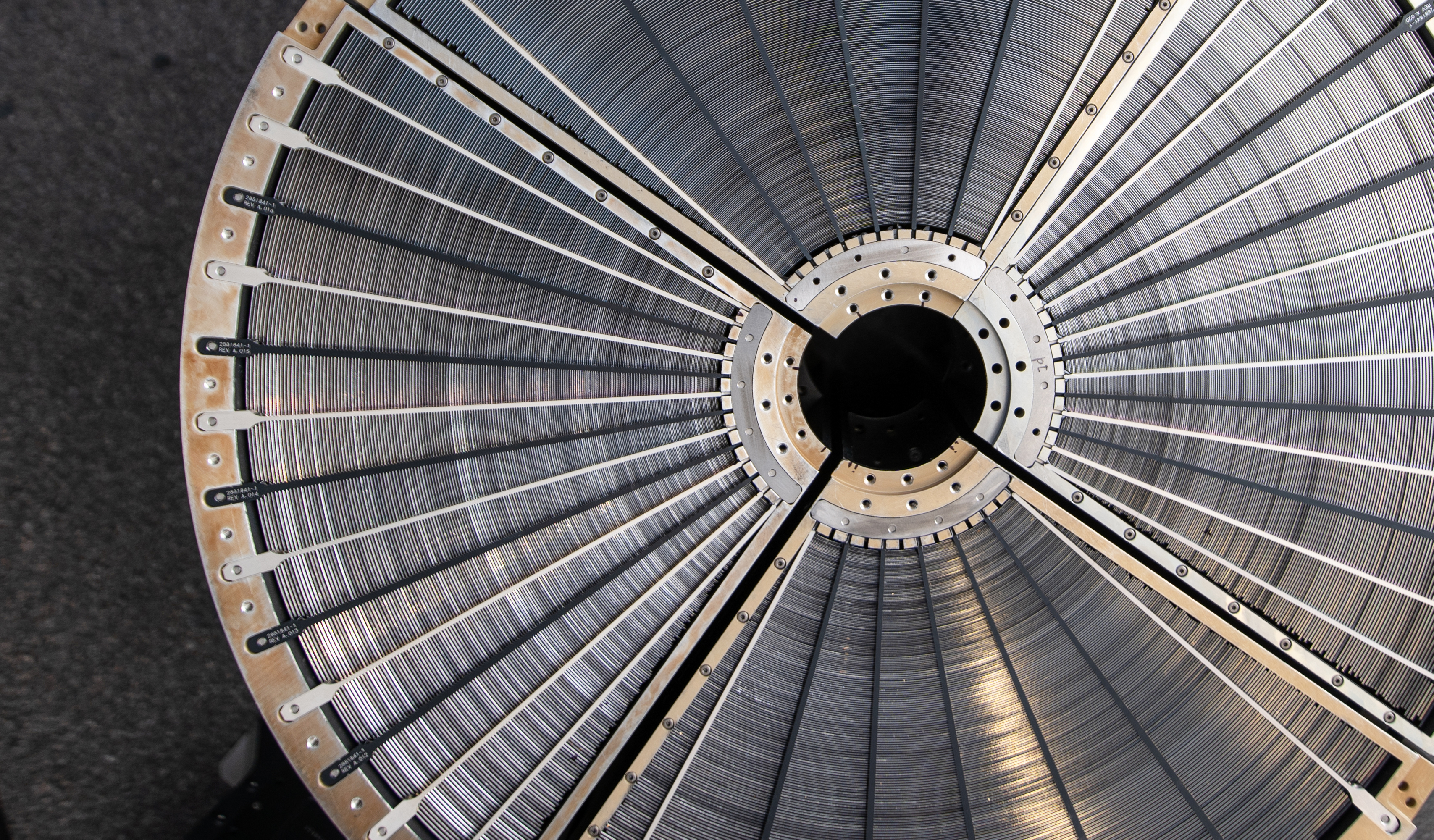XRISM: Calorimeter Spectrometer Insert and Mirror Tests

XRISM team members pose with the XRISM Calorimeter Spectrometer Insert in a NASA Goddard clean room. From left to right, they are Bryan James, Mike Sampson, Tomomi Watanabe, Pete Barfknecht, Scott Porter, and Sinclair Douglas.
Credit: Larry Gilbert/NASA
The X-ray Imaging and Spectroscopy Mission (XRISM, pronounced “crism”) is a collaboration between the Japan Aerospace Exploration Agency (JAXA) and NASA, along with ESA participation, to investigate the X-ray universe using high-resolution imaging and spectroscopy. XRISM features two instruments: Resolve, an X-ray calorimeter spectrometer, and Xtend, an X-ray imager.
The first group of images, taken in November 2019, shows scientists and technicians in a clean room performing an electrical checkout of the XRISM Calorimeter Spectrometer Insert (CSI), which includes the Resolve detector.
The remaining images were taken in December 2019 and show testing and calibration of a completed flight X-ray Mirror Assembly (XMA) at the 100-meter X-ray beamline facility at NASA's Goddard Space Flight Center.
Goddard developed the X-ray Mirror Assemblies, as well as the Resolve detector and many of its subsystems. XRISM is expected to launch in 2023.

The XRISM Calorimeter Spectrometer Insert (CSI) allows X-ray light focused by an X-ray Mirror Assembly at the front of the spacecraft to reach the Resolve detector. In flight, the silver cap will not be present. Part of the CSI was built using flight-quaified spare parts from the ill-fated Hitomi mission, as can be seen by the engraved "ASTRO-H" — an earlier name for the mission.
Credit: Larry Gilbert/NASA

A view of the opposite side of the XRISM Calorimeter Spectrometer Insert.
Credit: Larry Gilbert/NASA

The underside of the XRISM Calorimeter Spectrometer Insert. The two silver cylindrical features are the first- and second-stage refrigeration devices, which will be immersed in liquid helium during the mission.
Credit: Larry Gilbert/NASA

A member of the XRISM team carefully adjusts the wiring of the mission's Calorimeter Spectrometer Insert.
Credit: Larry Gilbert/NASA

These electrical leads power high-performance magnets in refrigerators that work in stages to keep the Calorimeter Spectrometer Insert very cold: 50 millikelvin, or 0.05 K above absolute zero (–459.58 F, –273.1 C).
Credit: Larry Gilbert/NASA

A XRISM team member bundles harnessing cables for the mission's Calorimeter Spectrometer Insert.
Credit: Larry Gilbert/NASA

Face-on view of a completed XRISM X-ray Mirror Assembly during tests in the X-ray beamline at NASA Goddard.
Credit: Brian Williams/NASA

A completed flight X-ray Mirror Assembly for XRISM awaits tests inside the 100-meter beamline facility at NASA Goddard.
Credit: Bill Hrybyk/NASA

Takashi Okajima, team lead for XRISM X-ray Mirror Assemblies, guides a completed flight mirror out of the X-ray beamline vacuum chamber for transport to another test facility.
Credit: Bill Hrybyk/NASA

XRISM team members Keisuke Tamura (left) and Takayuki Hayashi carefully pack a completed flight X-ray Mirror Assembly into a container for transport within NASA Goddard.
Credit: Bill Hrybyk/NASA
Credits
Please give credit for this item to:
NASA's Goddard Space Flight Center. However, individual items should be credited as indicated above.
-
Science writers
- Francis Reddy (University of Maryland College Park)
- Jeanette Kazmierczak (University of Maryland College Park)
-
Producer
- Scott Wiessinger (USRA)
Release date
This page was originally published on Friday, January 31, 2020.
This page was last updated on Wednesday, May 3, 2023 at 1:45 PM EDT.



